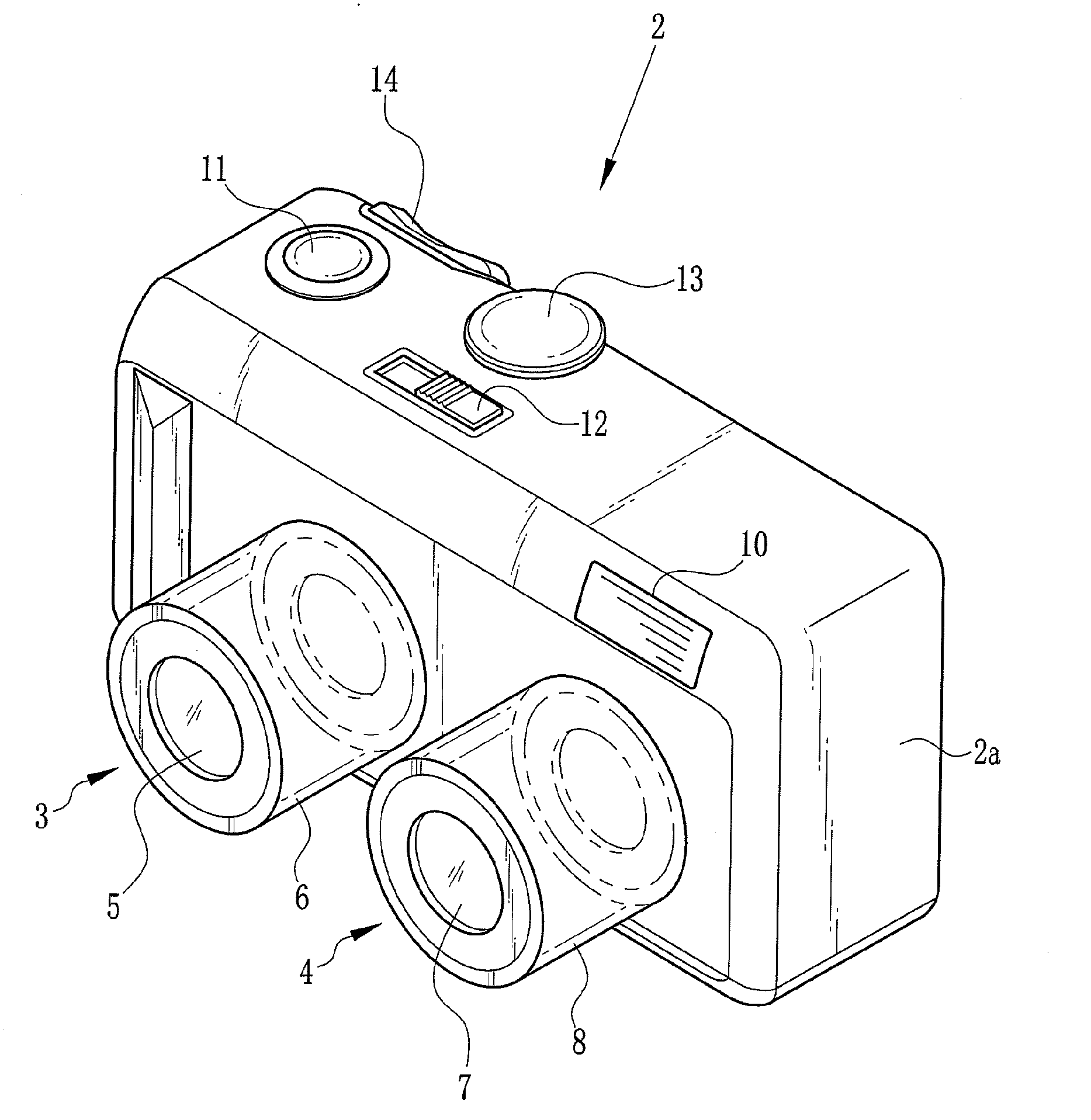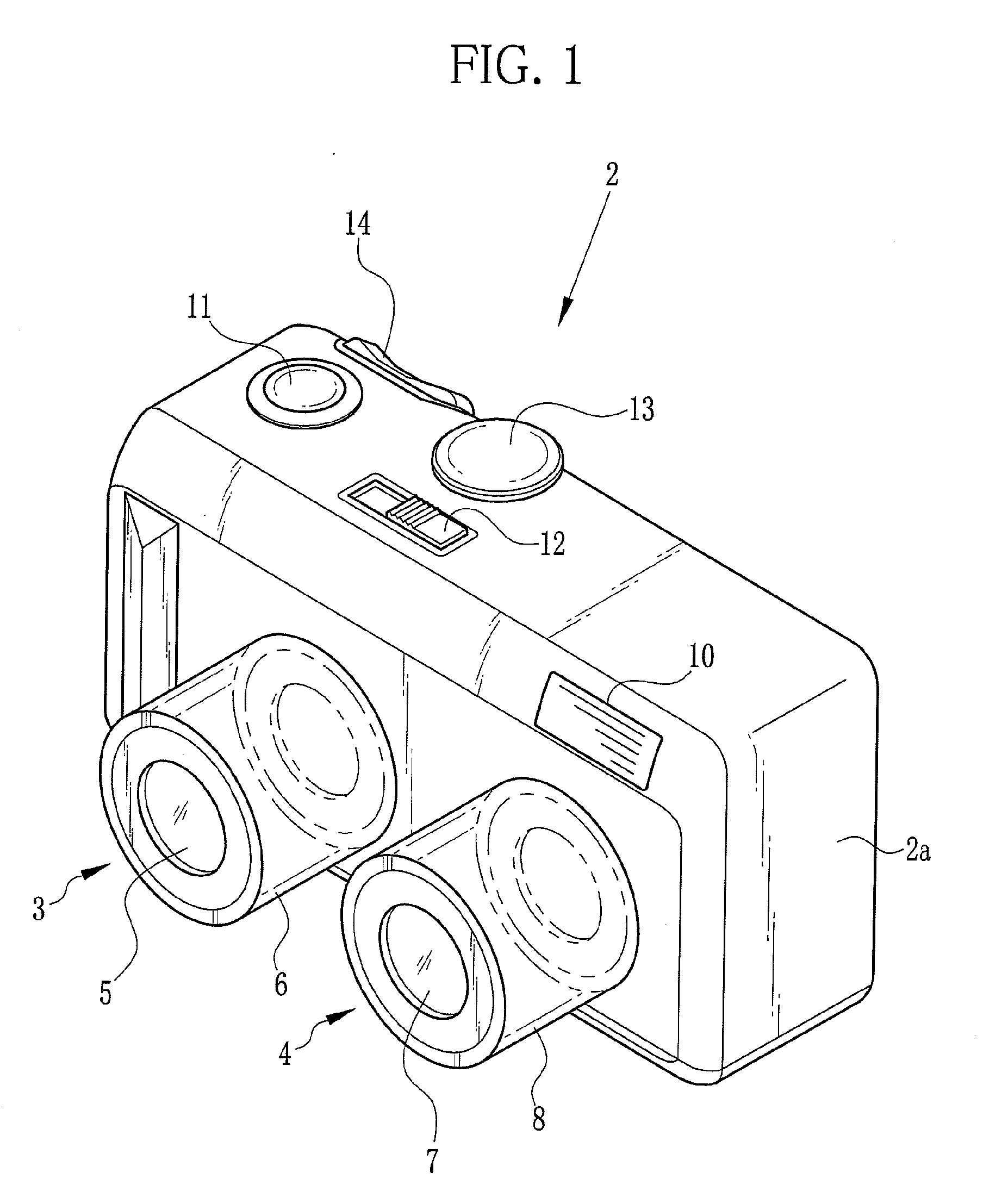Multi-eye camera and method for distinguishing three-dimensional object
a three-dimensional object and camera technology, applied in the field of multi-eye cameras, can solve the problems of upsizing, cost increase, subject hard to see, etc., and achieve the effect of cost increas
- Summary
- Abstract
- Description
- Claims
- Application Information
AI Technical Summary
Benefits of technology
Problems solved by technology
Method used
Image
Examples
first embodiment
[0085]After calculation of the scaling rate P, the horizontal scaling section 104 stretches or shrinks the shadow of the R viewpoint image at that scaling rate P. The horizontal scaling section 104 then inputs to the size calculating section 86 the processed shadow data of the R viewpoint image and the unprocessed shadow data of the L viewpoint image. The size calculating section 86, as in the case of the first embodiment, calculates the size of the shadow of the main subject in each of the processed R viewpoint image and the unprocessed L viewpoint image based on the shadow data inputted from the horizontal scaling section 104, and inputs calculation results to the difference calculating section 87.
second embodiment
[0086]Next, operation of the stereo camera 100 will be described with referring to a flowchart of FIG. 9. When the stereo camera 100 is put into the automatic switching mode and the shutter release button 11 is half pressed, the preliminary photographing procedure is started. The AE processing and the multipoint AF processing are carried out, in order to adjust the exposure amount and the white balance of each imaging unit 3, 4 and adjust the focus of each imaging optical system 5, 7. Simultaneously, the binary image generator 84 applies the binary processing to each viewpoint image, and the binary R and L viewpoint images are inputted to the shadow extracting section 85.
[0087]The shadow extracting section 85 extracts the shadow of the main subject from each of the inputted binary R and L viewpoint images. The extracted shadow data is inputted to the size calculating section 86 and the horizontal scaling section 104. If the shadow is not extracted, on the other hand, the shadow ext...
third embodiment
[0102]Now, operation of the stereo camera 110 will be described with referring to a flowchart of FIG. 12. When the stereo camera 110 is put into the automatic switching mode and the shutter release button 11 is half pressed, the AE processing and the multipoint AF processing are carried out in response to the half press of the shutter release button 11, to adjust the exposure amount and the white balance of each imaging unit 3, 4 and bring each imaging optical system 5, 7 into focus. At the same time, the binary image generator 84 applies the binary processing to each of the R and L viewpoint images, and the binary R and L viewpoint images are inputted to the shadow extracting section 85.
[0103]The shadow extracting section 85 applies the shadow extracting processing to each of the inputted binary R and L viewpoint images, in order to extract the shadow of the main subject. If the shadow is proper extracted, the shadow data is inputted to the size calculating section 86. If the shad...
PUM
 Login to View More
Login to View More Abstract
Description
Claims
Application Information
 Login to View More
Login to View More - R&D
- Intellectual Property
- Life Sciences
- Materials
- Tech Scout
- Unparalleled Data Quality
- Higher Quality Content
- 60% Fewer Hallucinations
Browse by: Latest US Patents, China's latest patents, Technical Efficacy Thesaurus, Application Domain, Technology Topic, Popular Technical Reports.
© 2025 PatSnap. All rights reserved.Legal|Privacy policy|Modern Slavery Act Transparency Statement|Sitemap|About US| Contact US: help@patsnap.com



